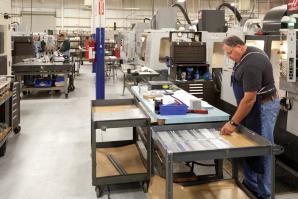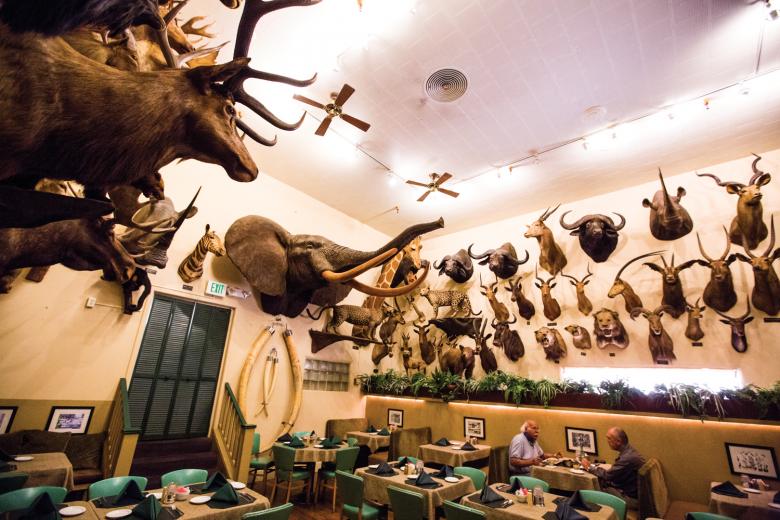The town of Rio Vista has lost gas production, lost weekend crowds of boaters and windsurfers and lost flagship hotels and Delta shoreline restaurants. But more importantly, its people have lost the notion that prosperity returns to those who stick to the status quo and wait it out.
A small group of residents have enlisted the help of a national team of architects, city planners and other urban experts to create a new economic plan for the town. The program, a mostly philanthropic endeavor through the American Institute of Architects, helps communities across the U.S. recognize their assets and develop an urban vision, as articulated through a series of suggestions. The program, which began in 1967, has surveyed 151 communities across the U.S.
For the citizens of Rio Vista, success is dire. While shopping centers have grown 20 miles to the east, in Fairfield, and wine tourism has bloomed 20 miles to the west, in Lodi, Rio Vista has deteriorated. Two downtown hotels are vacant, one of them covered in plywood. The waterfront area that runs a quarter mile from Main Street to the town’s entrance at Highway 12 is a gravel parking lot. Major housing divisions — some well populated, others as lifeless as a graveyard — are separated from downtown by vast parcels of dead grass.
Residents complain that some of these issues are rooted in an ongoing turf war between two primary communities: long-established families and seniors living in a massive retirement center on the edge of town. Their differing needs and perspectives have brought further challenge to a city council beset by budget problems. Despite its natural riverfront beauty and proximity to wine country and the Bay Area, Rio Vista has teetered on insolvency in recent years and continues to struggle with a brand that would attract jobs.
“We sat here for 30 years and didn’t change anything. Suddenly, here it was, we had to change. The changes we made were to put fires out, not to have any grand design and forward vision,” says Jack Krebs, a former councilman who is managing outreach for the AIA program.
Rio Vista sits on the west bank of the Sacramento River, the halfway point between San Francisco and Sacramento. The community’s first industry, agriculture, remains its strongest. Several dozen ranching families, many of whom are fourth generation or more, hold considerable clout within the local power structure.
The town’s most recent economic boon came from housing. A luxury retirement center, Trilogy at Rio Vista, was built in the 1990s with 3,200 dwellings. The center changed the look and culture of the town, as well as the average age, to 55 years. Ag land was gradually developed to benefit Trilogy and other housing divisions. City government eventually realized that other changes were needed to accommodate the 55-plus community.
So about a decade ago, it embarked on its most expensive project ever: a $31 million wastewater treatment facility needed to treat sewage generated by Trilogy residents. Unsurprisingly, the city was challenged with paying for its new, high-tech plant. Meanwhile, the old sewage plant, which was still in use by the established neighborhoods of Rio Vista, contained aging pipes and other infrastructure that needed repair. The two communities collided over who should pay for the rising costs of sewage — Trilogy didn’t want to pay for the old plant, and the townies resisted paying for the new one.
In 2009, the financial meltdown forced the city to cut one third of its employees. Median home prices fell to $224,000, nearly half of what they had been just four years prior. Low-income families abandoned the town in search of jobs and cheaper rent. Storefronts along Main Street were boarded up. Liberty Island, Rio Vista’s failed housing division, is a cluster of 13 deserted model homes that still sits outside of town as a post-apocalyptic reminder of the housing crash. It’s a relic of that time that can be found by Googling “worst recession ghost towns.”
The dispute over sewage costs and other issues didn’t help Rio Vista rally around its budget problem, and beneath the daily niceties of this small town, residents speak privately about hurt feelings that have impeded a sense of unity.
Then, in the summer of 2010, the Solano Transportation Authority released a report stating that, due to an expected increase in vehicle and ship traffic, the Highway 12 bridge that stands as an entrance to Rio Vista could eventually need to be replaced with a high-rise bridge farther away from town. The locales were aghast: Even though less than 4 percent of passersby ever stop in Rio Vista, removing that last bit of highway-generated foot traffic could be a death knell for downtown.
“That announcement made us all go, ‘ahhh!’” says Mary Ellen Lamothe, owner of Brand You Consignment on Main Street. “If they take the highway away, nobody will come here. They will just go around us.”
Rio Vista’s business community sent a letter to the transportation authority expressing deep concern. The authority responded by hiring a consultant to conduct an economic survey of the area, and that consultant, Mitch Connor of Archilogix, was familiar with a program that helped communities stage an economic turnaround. Connor suggested Rio Vista apply for a R/UDAT — a Regional/Urban Design Assistance Team coordinated by the American Institute of Architects.
“It’s a great way of lining up things, so when you roll up sleeves over 15 years, it’s a blueprint to work from,” says Connor, who worked on R/UDATs in Healdsburg and Santa Rosa.
Based on the specific needs of each community, the AIA assembles a team of six to 10 architects, urban planners, economists and other related professionals to descend on a town for four days. The experts tour the region, interview scores of residents, eat donated food and stay in donated bedrooms. But team members only sleep about five hours a night on average because, on the end of the fourth day, they must present the community with a multipage report outlining a stronger economic future.
“Based on everything we’ve seen, researched and discussed, this is what we recommend,” says Sidney Sweeney, executive director of the east Bay Area chapter of AIA, summarizing the final step. “Then, the local community starts figuring out how to make this happen. Many times, it’s picking one portion of the plan and doing something in the short term, like building a dock.”
Once an initial project is completed, supporters of R/UDAT hope it will bolster the public trust that has been absent in local government and help the community rally behind a plan.
“We’re not trying to be panacea for everything, but we want to do our best to make the quality of life here as good as possible,” says Dave Falk, a Trilogy resident who chairs the R/UDAT steering committee.
“[R/UDAT has] been successful in Healdsburg,” adds Falk, “they really know what they are doing.”
It isn’t noticed by anyone traveling there today, but Healdsburg once looked a lot more like Rio Vista than its current model of urban opulence. After Highway 101 opened in 1962, the downtown gradually became a truck stop of empty storefronts and about five bars mostly catering to the immigrant population.
But similar to Rio Vista, the town neighbored a river that was a popular vacation spot for Bay Area weekenders. And also like Rio Vista, the community sensed that vehicle traffic was set to increase due to a burgeoning wine tourism scene. When the residents received their R/UDAT in 1982, city planners had been considering building a shopping center north of town and condominiums on the current downtown plaza site.
“Twenty years after the freeway bypassed us, we were struggling with what direction we were going,” says Eric Drew, a longtime Healdsburg realtor. “It’s not just what did happen, it’s what didn’t happen that’s important about [R/UDAT]. One of the things that didn’t happen is this shopping center.”
Today, with the regional wine industry valued at more than $50 billion annually, Healdsburg Avenue is now a place for aristocrats in shiny designer clothing to window shop in front of chic apparel stores with names like Zizi and Yasuko. The plaza becomes so crowded that sidewalk parking is limited to 15 minutes. A city ordinance forbids chain stores from locating on that strip.
One thing is certain: Rio Vista isn’t Healdsburg, and nobody interviewed for this article wants to impersonate another community. But some lessons may be applicable. The small group promoting the Rio Vista R/UDAT hopes the program will help the community take an honest look at themselves, and make a plan.
“Where is it going to go? I don’t know. It can be an artisan village or a great spot for warehousing. It’s up to the community,” says Dave Greiner, president of the Bank of Rio Vista. “I think this is a cool area that could go in lots of directions. It just needs to decide on one direction and execute.”
Update: An earlier version of the story incorrectly labeled the AIA program the Rural/Urban Design Assistance Team. It is the Regional/Urban Design Assistance Team. The story has also been revised to reflect that RioVista has lost gas production, not oil. We regret the error.
TELL US WHAT YOU THINK: HOW WILL R/UDAT IMPACT RIO VISTA?
Recommended For You

The Auburn Advantage
How one city turned lifestyle into business leads
Downtown Auburn has a distinct, modern-day Mayberry feel, from the stone-paved sidewalks to the rustic brick bus stop. But five miles away,

Dusting Off and Moving Forward
Acuity with Daniel Keen
Daniel Keen, 54, was named city manager of Vallejo in March 2012. He has worked for seven California cities over a span of 30 years and has held city manager positions for 18 years.





Comments
Rio Vista needs to address the TERRIBLE road that leads to and through it- Highway 12. From Trilogy into Rio Vista, it is so bad that it is very dangerous to drive. Skinny, potholed, undivided, no shoulders...yet overwhelmed with big rigs and traffic. And no improvements in sight. No wonder Rio Vista is the way it is.
I would love to live in Trilogy ,but the town is awful.